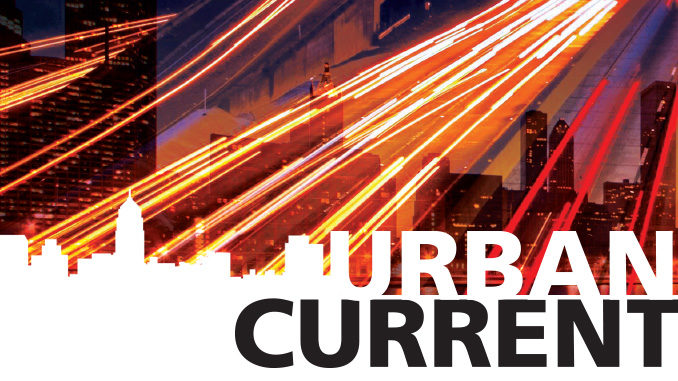
Millennials Projected to Overtake Baby Boomers as America’s Largest Generationscreams the headline by Richard Fry highlighting info by PewResearch.org.
Millennials are on the cusp of surpassing Baby Boomers as the nation’s largest living adult generation according to population projections from the U.S. Census Bureau. Millennials, defined as ages 20-35, numbered 71 million in 2016. Boomers (ages 52-70) numbered 74 million. Millennials are expected to overtake Boomers in population in 2019 as their numbers swell to 73 million and Boomers decline to 72. Boomers will be passed in population around 2028 by Generation X (ages 36-51 in 2016).
Millennial population is projected to peak in 2036 at 76.2 million.
Young immigrants are expanding the ranks of the Millennial generation. In contrast, Boomers, the generation defined by the “boom” in U.S. births following WWII, are aging and their numbers are shrinking in size as the number of deaths among them exceeds the number of older immigrants arriving in the country.
Millennials Move
Hope Yen & Kristen Wyatt write for Associated Press. “For the first time in a century most of America’s largest cities are growing at a faster rate than their surrounding suburbs as young adults seeking a foothold in the weak job market shun homebuying and stay put in bustling urban centers.
Delaying careers, marriage and having children amid persistently high unemployment, is driving the resurgence. College debt and toiling in temporary lower wage positions, they are avoiding home ownership in the suburbs for shorter-term-no-strings-attached apartment living with public transit and proximity to potential jobs in large cities.
“New Orleans, which saw its population shrivel in the mid-2000s, has seen a rebound in city growth relative to suburbs. Also showing wide disparities in city growth compared to suburbs are Atlanta, Denver, Washington, DC, and Charlotte, NC. Other big cities showing faster growth compared to the previous decade include Boston, Chicago, New York, Philadelphia, Minneapolis and Seattle.” (Yen, Wyatt)
“I will never live in the suburbs”, said Jacklyn King, 28, a project director at a Denver hospital. She grew up in a Denver suburb and remembers her parents’ 45-minute commute to the city every day. Along with her fiancé, she now rents a Denver house. “I just like being connected to everything down here – concerts, work, restaurants, all of it. This is where everything’s at”, said King who bikes 6 miles to her job.
“Major metropolitan areas (cities with a population of at least 1 million) are consistently seeing more 20-sometings move into their cities while their suburbs boast growth in the number of children and family-aged adults, ages 30-49. (USA Today 4/12/13)
Dowell Meyers, professor of Demography in Urban Planning at University of Southern California, points out “Between 1978 & 1990 there was a 32% increase in births, so now there are 32% more young adults in the city.”
However, David Johnson, at TIME.com, lists the “25 Suburbs Where Millennials are Moving.” Thousands are moving to the suburbs of Riverside, CA, San Antonio, TX, and Orlando, FL. “The burbs of those 3 metro areas saw the greatest growth in the number of adults aged 25-34 between 2010-2015 according to data from the Urban Land Institute.
Since millennials are avoiding home ownership, suburbs with a strong apartment market and urban amenities become an attractive option. Number 4-10 on the list from Urban Land Instituteare Virginia Beach, VA, San Diego, CA, Miami, FL, Baltimore, MD, Houston, TX, Buffalo, NY, and Sacramento, CA. This data challenges the notion that millennial magnets are all inside city limits.
Several cities seem to be experiencing a Millennial exodus. “After years of growth, the population of millennials in Boston and Los Angeles has fallen since 2015 with more young people leaving the cities than arriving last year, according to the latest Census data. Millennial growth has slowed in large hubs like Chicago, New York and Washington, D.C. (David Johnson, TIME.com)
Things to Think About
- The biggest takeaway of course is the demographic shift to a millennial majority.
- Millennials are urban.
- Cities were already dominated by post-modern thought.If anything, millennials are post, post-modern. They are not just “a little less religious.” There are markedly more atheists among millennials and only 15% claim to be involved in any church.
- Their political views are farther left. Just think about the remarkable millennial rejection of Hillary for Bernie. This is stunning on many levels. They abandoned a woman Presidential candidate for an older white male who was more in step with their values! (SeeExclusive: Democrats Lose ground with Millennials, REUTERS, 4/30/18)
- With fewer things to tie them down, they are even more transient than the average American.
- I can’t help but wonder if the millennial move to metropolitan areas is seen from their perspective as an extension of their college days. They left home to relative freedom and anonymity away from family, friends, neighborhood and in many cases church families. People in our own congregation who moved to the suburbs have seen their children move back into the general area of our church as spiritually disengaged millennials. Several pastors have told me that their children live in our area and were not doing well spiritually certainly not involved in any church.
The rising tide of the millennial population is the mission field surrounding us.


